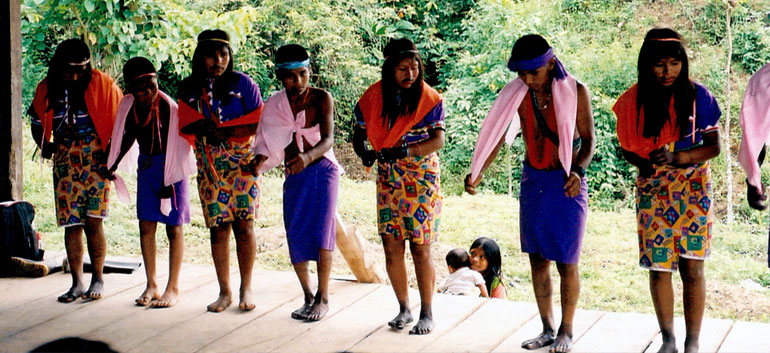Colombia’s Constitutional Court held a public hearing on the situations of 36 indigenous peoples who are found to be at risk of extinction.
Judge Luis Vargas came to the conclusion that the indigenous groups were at risk of existence due to complications with the armed conflict between illegal rebel and paramilitary groups, and the Colombian government, after a public hearing which brought many indigenous representatives and speakers in front of the Constitutional Court.
Vargas verified the existence of a grave situation of violence and displacement facing indigenous peoples throughout Colombia since an order of protection for Colombia’s indigenous was instated by the government in 2004.
“We found that the plight of indigenous peoples remains extremely serious and compromises their physical and cultural survival,” stated the judge.
The hearing illustrated that indigenous people are extremely vulnerable to the actions of illegal militant groups, drug traffickers, mining groups and others. The rebel group, FARC has on multiple occasions been accused of and subsequently denied being responsible for killings, intimidation, and control of indigenous groups in Colombia.
MORE: FARC leader denies provoking ‘genocide of indigenous’ in southwest Colombia
“[Fear and distrust of armed groups is valid however] because they continue to move through our areas,” said one native spokesman Jorge Ariza.
Another spokesman from the indigenous village of Embera-Chami said in a speech in front of the court that last year in the western and soutwestern departments of Choco and Putomayo, 4000 people were displaced and there were at least 28 murders.
MORE: Violence in western Colombia displaces indigenous people
The same spokesman who wished to remain anonymous asserted that the government has not followed through with its order of protection and promise to install safeguards against armed rebel groups. This representative is skeptical if such issues will be seriously discussed if solutions will be agreed upon during the ongoing peace discussions in Havana, Cuba between the Colombian government and the FARC.
Though victims, human rights, and weapons are on the agenda for the current peace talks with the FARC, indigenous peoples are not slated to be specifically addressed.
MORE: Text of deal between Colombia’s government and rebel group FARC to end armed conflict
Another spokesman who did not want his name published asserted that in many areas of indigenous villages and communities, rebel groups such as the Rastrojos, the Urabeños, and the FARC have had an increased presence since 2004.
MORE: ‘Drug alliances’ terrorize Colombia’s Pacific coast
Many indigenous leaders chose to remain anonymous as they already feel threatened by speaking publicly and several leaders have been killed in recent years allegedly by rebel groups.
The United States in February criticized Colombia for not doing enough to protect Colombia’s indigenous population.
MORE: US criticizes deteriorating security for Colombia’s indigenous
Colombia’s President Juan Manuel Santos emphasized his administration’s dedication to help indigenous Colombians shortly after being criticized asserting that his government will have spent about $547 million dollars for indigenous protection.
MORE: Colombia investing in protection of indigenous rights
Finance Minister, Mauricio Cardenas predicted that the government has spent in total near $3 billion to protect Colombia’s indigenous population.
Nevertheless, toward the end of the day’s hearing, Judge Vargas concluded that near 1.4 million indigenous people need immediate protection by the government.
Sources
- El conflicto armado amenaza la existencia de 36 pueblos indígenas (La Republica)
- Corte alerta sobre grave situación de comunidades indígenas en Colombia (El Espectador)


